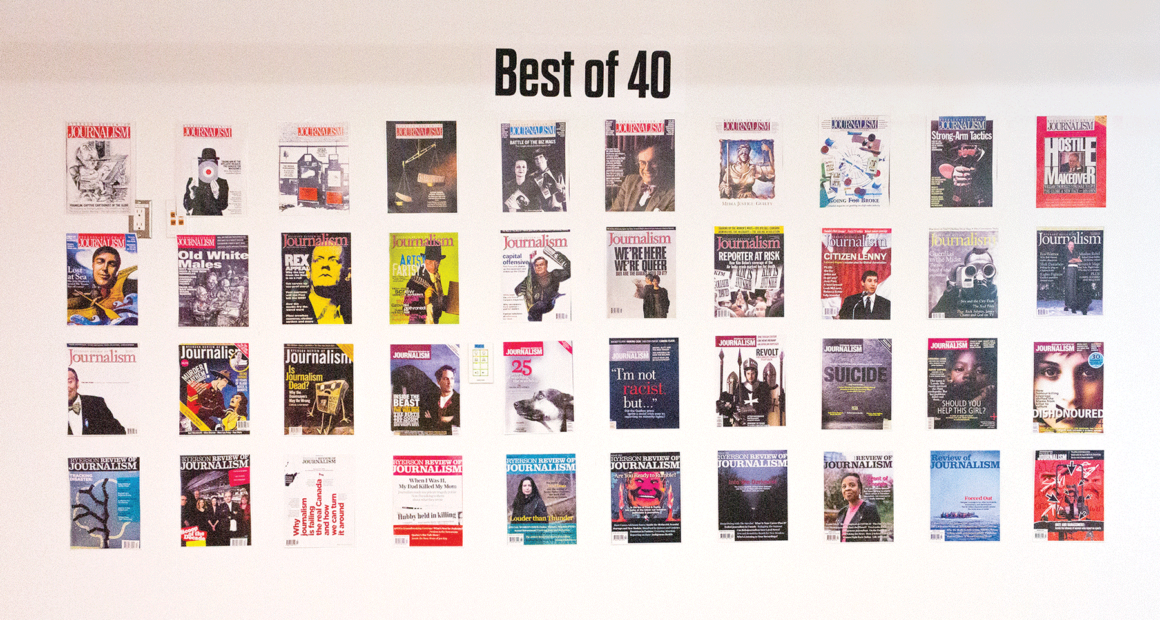40 years of the Review of Journalism
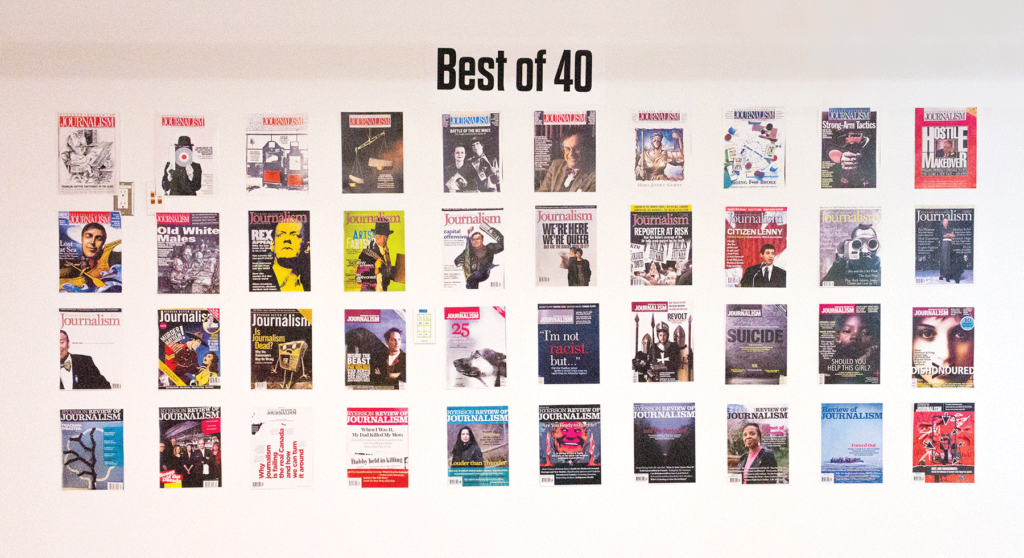
To celebrate the Review of Journalism’s 40th anniversary, the magazine curated an exhibition called On Assignment at the Assembly Gallery, on the Toronto Metropolitan University campus, from March 7 to 15. An opening reception was held on Thursday, March 7. As guests entered the warmly lit gallery space, they were greeted by walls plastered with prints of magazine covers, archival work, published articles, and images from the past 40 years. Filled with objects and documents, the gallery was both a repository of and a witness to an ever-developing and modernizing journalism industry.
Founded in 1984, the magazine runs on a mission unique in Canada: to examine and comment on the current state of the Canadian journalism industry. Calling itself the “Watchdog on the watchdogs,” the Review has shifted and adapted along with the industry, documenting significant changes in the media landscape. It has watched the rise of social media, noted increasing concerns about diversity in newsrooms, and, occasionally, featured conversations about journalism’s demise.
Each issue of the magazine goes through months of attentive work, with student journalists from the magazine lab seeing the editorial process through from start to finish. The exhibition was a time capsule representing the past 40 years of media and a testament to the role the Review plays in analyzing the journalism industry.
Showcasing the Work
In his remarks at the opening, Ravindra Mohabeer, chair of TMU’s School of Journalism, said that, at the conception stage of the exhibition, he began to wonder how many other magazines were 40 years old in Canada. His curiosity was piqued, and he found that many magazines that had also lasted 40-plus years were typically backed by money or had moved between money. “It’s not necessarily always the same level of engagement,” he said. “Not at all like the consistency of what the Review has been over time, how it has grown over time, thanks to the generosity of the students who have been involved over the years.”
Mohabeer said being chair has meant either being the publisher of things that people just read and move on from or the publisher of things that expose “really complicated and difficult, very-hard-to-talk-about stuff.” He added, “It is the students who take on all of those risks on behalf of us all, because all of those things are necessary to keep the field going.”
Prioritizing Inclusivity
In a room filled with years of journalists’ work, four distinct themes were highlighted on tall white dividers in the shape of an X in the middle of the room. For each section, an archival magazine was chosen to represent one of the themes: inclusivity, ethics, security, and safety. Presented as the most pressing journalistic issues during the Review’s 40 years, these themes remain relevant today.
First, the Review strives to recognize the importance of diversity and inclusion in journalism—including keeping a critical eye on publications that may be falling behind. As the Canadian Association of Journalists’ 2023 Newsroom Diversity Survey found, there is still a diversity gap in many Canadian newsrooms. In the Spring 1999 cover story, “We’re Here, We’re Queer,” the magazine dove into the lack of 2SLGBTQIA+ coverage in Canadian media. Twenty-five years later, the Review continues to analyze the inclusivity of the industry, running stories about everything from harassment of women reporters to the need for more informed coverage of refugees. “As journalists,” the exhibition states, “we strive to present diverse perspectives and opinions without bias or partiality.”
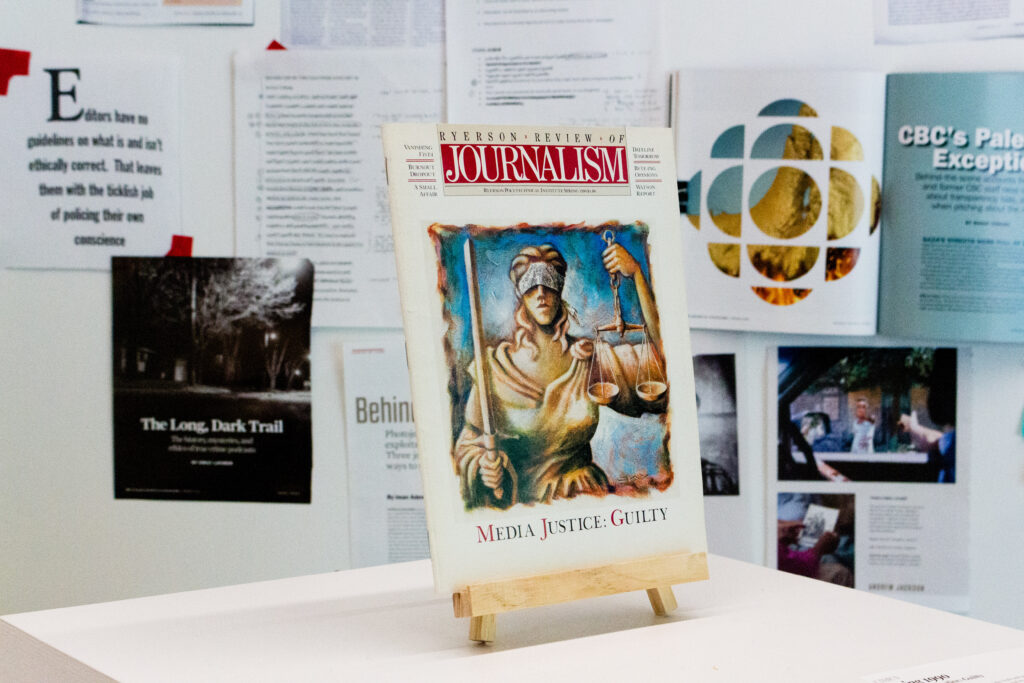
Second, as transparency and integrity are major attributes of good journalists’ work, the theme of ethics plays a key role in the Review’s reporting. Standards relating to bias, justice, and fairness have changed dramatically in the industry, especially as representation has become broader and the power of sharing has expanded online. The featured Spring 1990 issue, “Media Justice: Guilty,” discusses the role of the media in justice and represents the necessity of truthful and thoughtful reporting. As the exhibition and the magazine emphasize, journalists must minimize harm and adopt an accurate and undistorted reporting process in order to maintain an ethical approach.
The third theme, safety, is exemplified by the Summer 2002 cover story, “Guerillas in the Midst,” which symbolizes the risks journalists often face while trying to uncover the truth. Whether on the front lines or reporting from a distance, many journalists around the world experience physical and psychological threats and danger. As the Committee to Protect Journalists notes, hundreds of journalists are killed, imprisoned, or attacked for trying to do their jobs. As of March 28, 2024, the CPJ counts 95 reported journalists and media workers killed in Gaza, Lebanon, and Israel since October 7, 2023. The CPJ describes this time as “the deadliest period for journalists since CPJ began gathering data in 1992.”
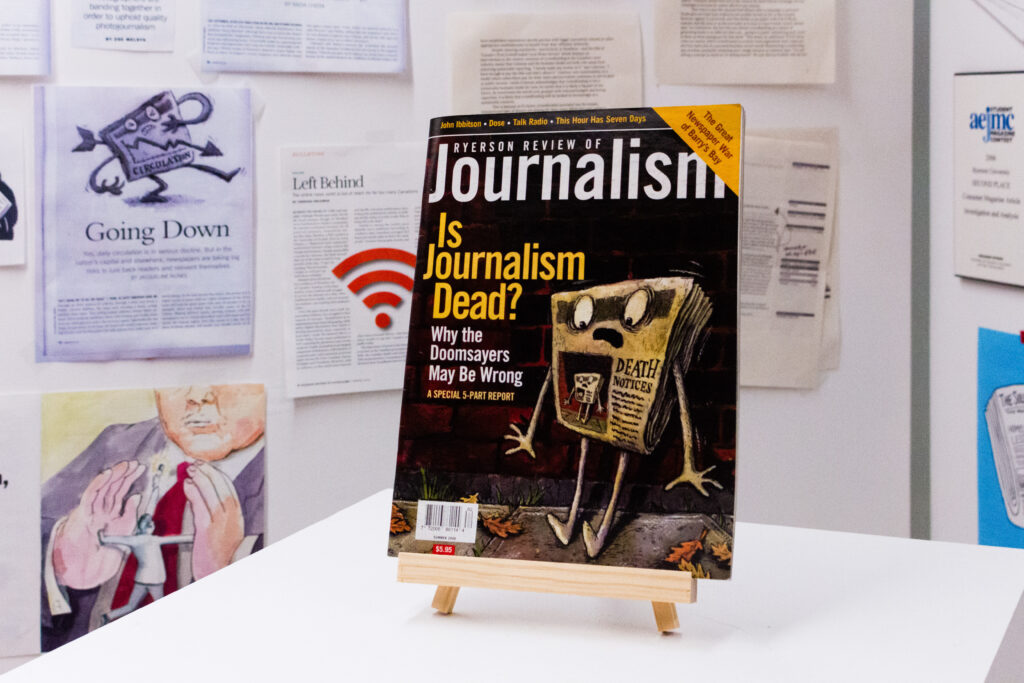
The Review recognized these dangers by including this as a major theme of the exhibition, highlighting that there must be more done to protect journalists from harm. The exhibition states, “The systematic targeting of us is a telling reflection of how vital our work truly is.”
The fourth theme of the exhibit focuses on the state of the journalism industry in relation to job security. With yearly mastheads comprising emerging professionals, concerns regarding the industry fading have been front of mind. As this theme’s representative cover story package, “Is Journalism Dead?” is from Summer 2006, it is clear that these conversations are not new. Throughout its 40 years, the magazine has followed the changes in the industry, and will continue to do so.
Galleys to Google Docs
Lynn Cunningham, a retired journalism school professor and current copyediting consultant for the Review remembered, “The stories were printed on galleys, they were waxed, and then they were put down on the pages. And to go from there to here is an astonishing change.”
In recent years, the magazine has expanded beyond print, establishing a comprehensive website, social media accounts that follow trends, and podcasts. The Review currently is home to three podcasts: Dear Journalist, which features established journalists speaking about the lessons they’ve learned; Pull Quotes, a series that discusses emerging issues and topics in journalism; and Reviewed, a special series that looks back on the magazine’s 40 years of production. In one corner of the exhibition space, a flat-screen TV was perched on the wall above a podium with headphones and an iPad, where visitors could shuffle through episodes of the podcasts.
On a separate wall, another flat-screen TV played “The Review of Journalism Celebrates 40 Years,” a video trailer made by the masthead reflecting on the important developments within the journalism industry. “Now there are so many platforms,” said Bill Reynolds, a professor with TMU’s School of Journalism and instructor for the Review. Beyond the yearly production of a hard-copy magazine, Reynolds said the current masthead “jumped in and decided they want to do everything.” Prarthana Pathak, this year’s editor, added, “The Review, as has every other magazine and newsroom in the country, embraced media and new technology.”
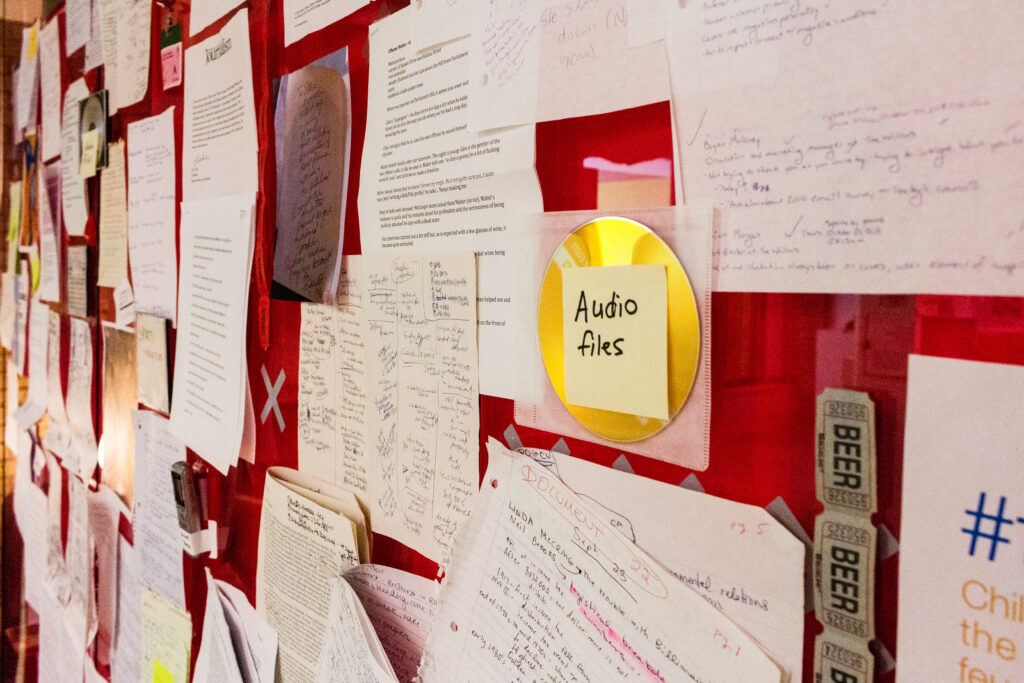
Pasted on a deep red backdrop at the far wall of the exhibition was evidence of this change. Before, journalists often handwrote transcripts and stored interviews on USBs and CDs rather than on Google Drive. Accordion files were bulging and messy—which may still be true for journalists today, except our messes have become digital. Shoved into digital folders, our collections of research, transcripts, and fact-checking files look different—yet remain rooted in the public interest. “This room is just a big appreciation for what we hope to continue to produce for the next 40 years,” Pathak said. “I don’t think journalism is dead—it needs to be more appreciated, especially with what the Review does: critique media. If we continue doing that, it will live on.”
The industry may be ever-changing, but the On Assignment exhibition demonstrated how journalism is an anything-but-ordinary craft and that journalists will never stop talking about it.


